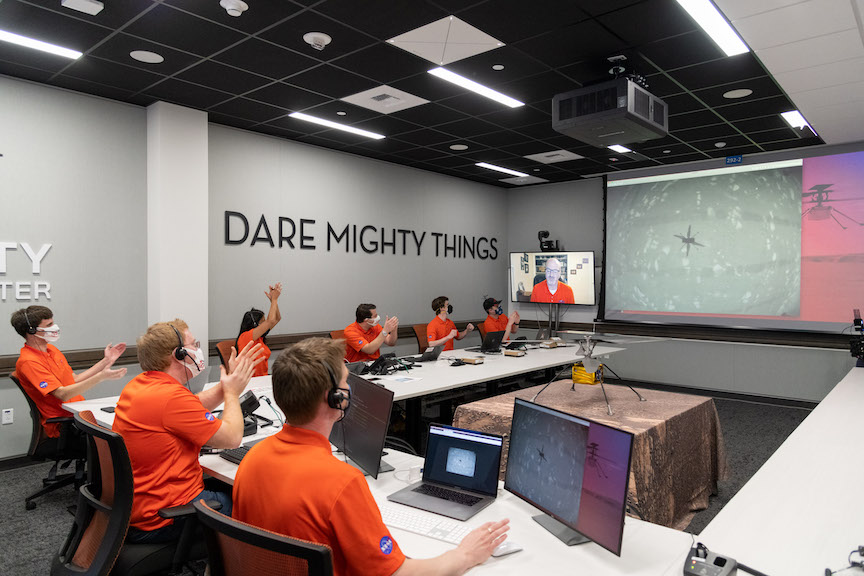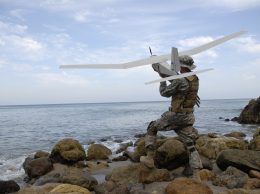‘A flawless flight’ for AeroVironment’s Mars drone
IN THIS ARTICLE
- Banking & Finance Topic
- Jorge Mercado Author
By Jorge Mercado Monday, April 19th, 2021

Ingenuity, a helicopter drone developed by Simi Valley-based AeroVironment, made history early in the morning of April 19, becoming the first man-made aircraft to fly on another planet, according to the National Aeronautics and Space Administration.
“Goosebumps,” MiMi Aung, NASA’s project manager for Ingenuity, said during a press conference while looking at a video of Ingenuity’s flight around Mars. “It looked just (like) the way we had tested in our test space simulator chamber here. Absolutely beautiful flight, I don’t think I can ever stop watching it.”
The small helicopter, which only weighs about 4 pounds, first became airborne at 3:34 a.m. Pacific time on Monday morning. According to NASA, Ingenuity climbed to its prescribed maximum altitude of 10 feet, hovered for five seconds, turned, then hovered for another 25 seconds before successfully touching back down.
In total, the helicopter was flying for about 40 seconds.
“That’s what we told Ingenuity to do and it did exactly that and it did it just perfectly. It was a flawless flight,” Håvard Fjær Grip, Ingenuity’s chief pilot, said during the press conference.
Ingenuity arrived on Mars on board Perseverance, the Mars 2020 rover, which landed on the Red Planet on Feb. 18.
Originally, Ingenuity’s takeoff date was meant to be April 11, but an error sequence during testing forced the team to postpone the date indefinitely.
Despite possible signs of worry, Bob Balaram, the chief engineer of the Mars helicopter, said that Ingenuity itself is “extremely healthy at this point.”
“She’s even healthier than she was before this flight. She shook off some of her dust that had been covering her solar panels and is, in fact, producing even more solar energy than before,” Balaram said during the press conference. “The batteries are looking good, the communication system is fantastic. … All in all, it’s in a perfect state.”
One of the goals of Ingenuity was to prove that flight was capable at the Red Planet, which has an extremely different and much more harsh environment than here on Earth.
“When things work, it looks easy. I would like to take this opportunity to remind how difficult it is to fly a rotorcraft on Mars,” Aung said.
Mars has significantly lower gravity, about 1/3 that of Earth’s, and an extremely thin atmosphere, with only 1% the pressure at the surface compared to Earth, according to NASA.
That means flying a helicopter 10 feet off the ground on Mars is equivalent to flying one at three times the height of Mount Everest on Earth, Aung said.
“Ingenuity had to be really light, small and had to be able to fly in this thin atmosphere and survive on its own,” Aung said. “It did all of that at under four pounds.”
The goal of Ingenuity will be to gather data and send it back to Earth to inform engineers that will be designing future generations of Mars helicopters.
“Beyond this first flight, over the coming days we have up to four flights planned, increasingly difficult flights, challenging flights, and we are going to continually push all the way to the limit of this rotorcraft,” Aung said. “We really want to push the rotorcraft flights to the limit.”
Related Articles
 Tuesday, June 28th, 2022
Tuesday, June 28th, 2022










